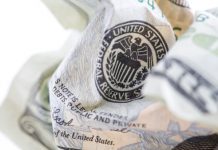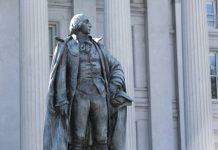Surprisingly, BOE voted 6-3 to leave the Bank rate on hold at 0.50%. Chief economist Andy Haldane joined Ian McCafferty and Michael Saunders in opting for a +25bps rate hike. The outcome is more hawkish than consensus of a 7-2 vote. The more split committee was resulted from the dividing views over the economic outlook. Another surprise is that the Committee has changed its guidance about when it might start unwinding its asset purchase program which currently stands at 435B pound. BOE now believes that it might start to sell the government bonds when the policy rates have reached around 1.5%, compared with 2% previously. British pound has got the biggest bounce in more than 2 week after slumping to 1.3099, the lowest level over 7 years, before the announcement. The chance of an August rate hike has immediately increased to 67% from about 50% before the meeting.
In the preview, we noted that the members need more data points to determine whether the growth slowdown in the first quarter was driven by temporary factors or would persist for a longer period of time. The June meeting revealed that the members so far still judged that “the softness of activity in the first quarter had been largely temporary”. The noted that household consumption had “recovered strongly from their subdued levels at the time of the previous meeting”. However, the division lies here: The majority preferred to stand on the sideline in June, given the softer global growth outlook and weak manufacturing output and goods exports in April. These members preferred to see more data in these areas before adopting for a rate hike.
On the other hand, the dissenters “had a higher degree of confidence that the slowdown in Q1 was temporary or erratic and would largely be unwound”. The minutes added that these members saw the labor and pay settlement indicators as contain “upside risks to the expected pickup in average weekly earnings and unit wage costs”. They judged that “a modest tightening of monetary policy at this meeting could mitigate the risks of a more sustained period of above-target inflation that might ultimately necessitate a less gradual subsequent change in policy and hence a sharper adjustment in growth and employment”.
BOE has adjusted its forward guidance on QE, noting that it might start to sell the government bonds when the policy rates have reached around 1.5%, compared with 2% previously. While this appears a hawkish shift in first glance, the fact that the SONIA market is not pricing Bank rate at 1.5% until 2027 signals that the QE program would stay unchanged for an extended period of time.













